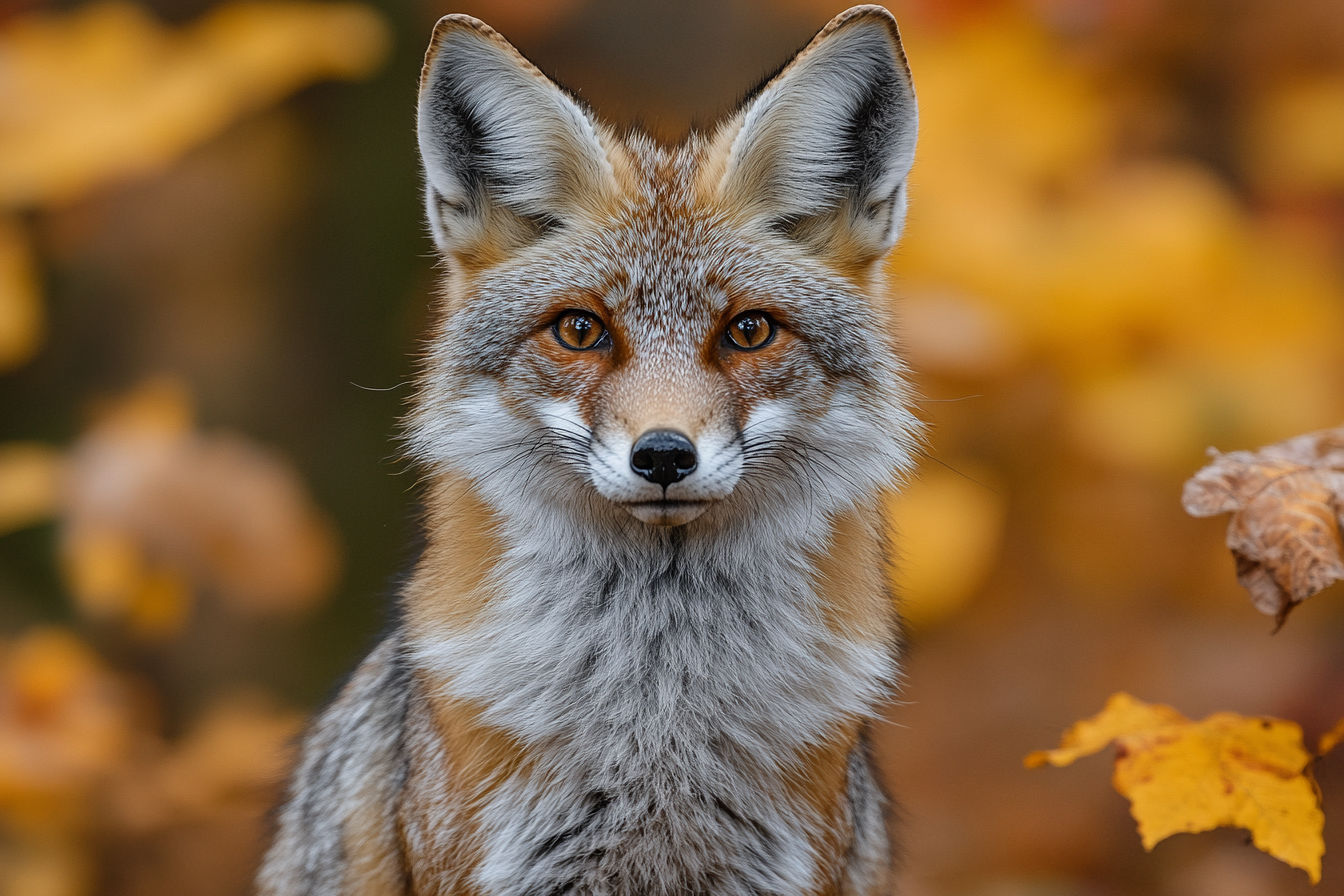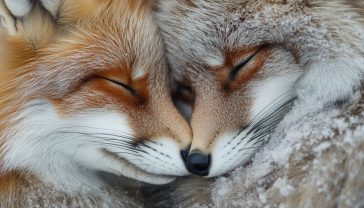Where Do Foxes Live? Exploring Their Diverse Habitats.
Foxes are incredibly adaptable animals, living in environments ranging from dense forests to city streets. But where exactly do they call home? Explore their varied habitats here.

This post may contain affiliate links. If you make a purchase through these links, we may earn a commission at no additional cost to you.
Did you know that foxes can be found almost everywhere on Earth—from the icy tundras of the Arctic to the scorching sands of the Sahara? These cunning creatures are among the most adaptable mammals on the planet, capable of thriving in diverse habitats, including forests, deserts, and even bustling urban environments. But what makes foxes so versatile, and how have they managed to coexist so seamlessly with human development? Let’s uncover the fascinating world of fox habitats and discover where these clever canines call home.
Natural Habitats of Foxes: From Forests to Deserts
Foxes belong to the Canidae family, which includes wolves, dogs, and jackals. While the red fox (Vulpes vulpes) is the most common and widespread species, other fascinating species like the arctic fox (Vulpes lagopus), fennec fox (Vulpes zerda), and grey fox (Urocyon cinereoargenteus) have carved out unique ecological niches. Here’s how different species of foxes have adapted to thrive in some of the world’s most challenging environments.
🌲 Forests and Woodlands: The Classic Fox Habitat
For many fox species, forests and woodlands are the perfect home. These areas provide:
- Plentiful cover for hiding and hunting.
- Rich food sources, including small mammals, birds, and insects.
- Ideal den locations in dense underbrush for raising young.
The red fox, in particular, flourishes in wooded environments. The dense vegetation helps foxes ambush prey, while the undergrowth offers safe spaces to rear their kits. Forested regions also allow foxes to remain concealed from larger predators.
🌾 Grasslands and Meadows: Open Terrain Hunters
Grasslands and meadows attract foxes with:
- Wide-open spaces that make it easy to spot prey.
- Abundant small mammals, such as rabbits and rodents.
- Opportunities for agile hunters like the red fox, whose sharp hearing and keen sense of smell help them locate prey hidden in the tall grass.
These environments allow foxes to rely on their speed and cunning, showcasing their adaptability in areas with less cover but abundant food.
❄️ Tundra and Arctic Regions: Home of the Arctic Fox
In the harsh tundras of the Arctic, the arctic fox reigns supreme. But how do they survive such extreme conditions?
- Seasonal camouflage: Their fur changes from white in winter to brown or grey in summer, blending with the environment year-round.
- Compact body and furry feet: These adaptations minimise heat loss and provide insulation against the cold.
- Resourceful hunting: Arctic foxes follow polar bears to scavenge leftovers or hunt small mammals like lemmings.
Surviving in one of the most unforgiving climates on Earth, arctic foxes are a testament to nature’s incredible ability to adapt.
🏜️ Deserts: The Fennec Fox’s Domain
In the scorching Sahara Desert, the fennec fox—the smallest fox species—thrives. Their unique adaptations include:
- Oversized ears: Not just for hearing prey underground but also for dissipating heat.
- Nocturnal habits: Hunting at night helps them avoid the daytime desert heat.
- Cool burrows: These underground dens provide shelter from extreme temperatures.
Despite the challenges of desert life, the fennec fox’s charming appearance and survival strategies make it one of the most fascinating fox species in the world.
🌆 Urban and Suburban Environments: Foxes in the City
Did you know that foxes are increasingly common in cities? Their adaptability extends beyond natural habitats, making them urban survivors.
Urban Foxes:
- Thrive in parks, gardens, and even abandoned buildings.
- Feed on discarded food, pet food, and urban prey like rats and pigeons.
- More active at night to avoid human interaction, although some are bold enough to be seen during the day.
The red fox has become especially adept at navigating urban landscapes, turning city streets into hunting grounds and alleyways into dens.
Suburban Foxes:
- Often build dens under sheds, decking, or in quiet backyards.
- Exploit a combination of natural prey and human food sources.
- Benefit from proximity to both wild areas and urban environments, giving them the best of both worlds.
This remarkable ability to adapt to human environments highlights the fox’s intelligence and resilience, allowing them to flourish even in heavily populated areas.
🌍 Global Distribution of Foxes: Found on Almost Every Continent
Foxes have an impressive global reach, living on nearly every continent except Antarctica. Here’s a breakdown of where different species can be found:
🌎 North America:
- Red foxes roam widely, from Canada to the southern United States.
- Grey foxes, known for their tree-climbing skills, are common in southeastern U.S. forests and rocky terrains.
🌍 Europe:
- The red fox is widespread, thriving everywhere from Scandinavia to the Mediterranean.
- In the United Kingdom, urban foxes are a familiar sight in cities like London, adapting seamlessly to urban life.
🌏 Asia:
- Red foxes stretch across Russia, the Middle East, and East Asia.
- The corsac fox (Vulpes corsac) inhabits the steppes and deserts of Central Asia, perfectly adapted to semi-arid environments.
🌍 Africa:
- The fennec fox claims the Sahara Desert, using its unique adaptations to thrive in extreme heat.
- The Cape fox (Vulpes chama) calls Southern Africa home, while the pale fox (Vulpes pallida) roams the Sahel region.
🌏 Australia:
- Foxes are not native to Australia.
- Red foxes were introduced by European settlers in the 19th century.
- Since their introduction, they have become invasive, posing a significant threat to native wildlife due to their predatory behaviour.
💡 Why Are Foxes So Adaptable?
What makes foxes such successful survivors? It comes down to three key factors:
- Dietary Flexibility: Foxes are omnivores, eating everything from small mammals and birds to fruit, insects, and carrion. This dietary adaptability allows them to thrive in diverse environments.
- Behavioural Intelligence: Foxes adjust their activity patterns to avoid predators—or humans. In urban areas, they shift to nocturnal behaviours, while in the wild, they may hunt during the day.
- Physical Adaptations: From the thick fur of the arctic fox to the heat-dissipating ears of the fennec fox, each species boasts unique traits designed for survival in its specific habitat.
✨ Fascinating Fox Facts
- Urban foxes in London are known to use crosswalks and have learned to navigate traffic—a testament to their intelligence.
- The arctic fox holds the record for the longest tracked journey of any land mammal, covering 3,506 kilometres from Norway to Canada in just 76 days!
- The fennec fox’s large ears aren’t just adorable—they also help them hear insects moving underground.
🌟 Conclusion: Foxes—Nature’s Ultimate Survivors
From frozen tundras to urban streets, foxes are masters of adaptation. Their ability to thrive in forests, grasslands, deserts, and even bustling cities underscores their resilience, intelligence, and cunning nature. Found on almost every continent, these remarkable creatures have proven time and again that no matter how the world changes, foxes will find a way to survive—and thrive.
So, the next time you catch a glimpse of a fox disappearing into the trees or crossing a city street under the cover of night, you’re witnessing one of the animal kingdom’s greatest success stories—a survivor perfectly in tune with the world around it.






